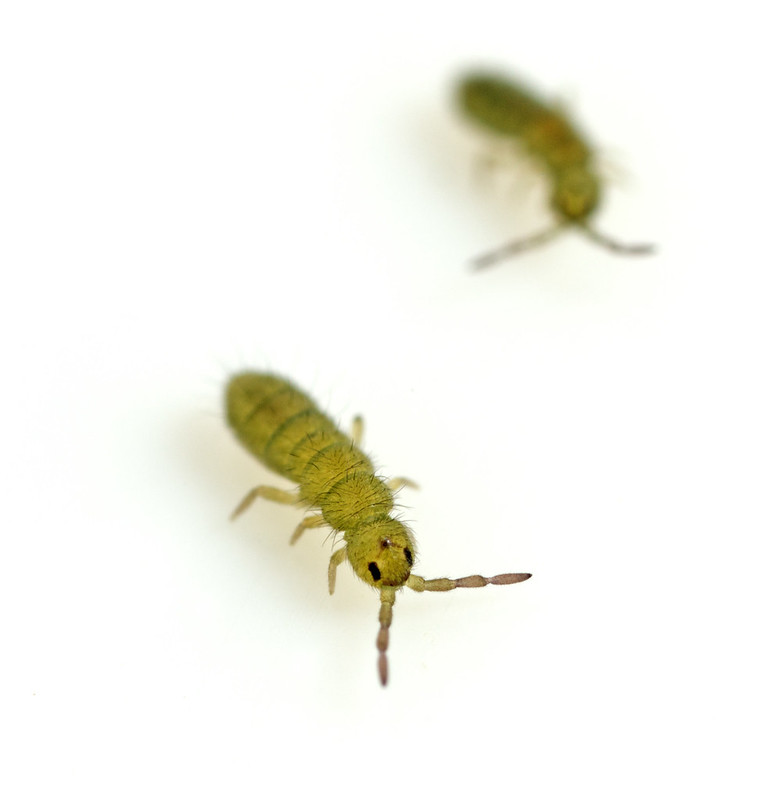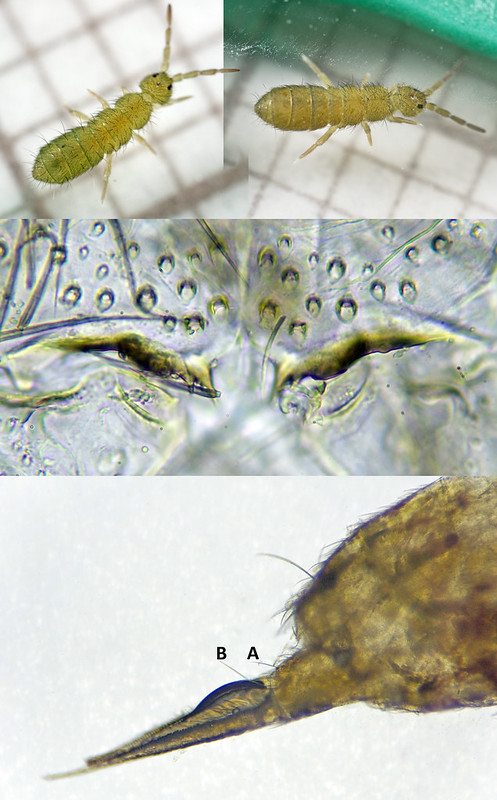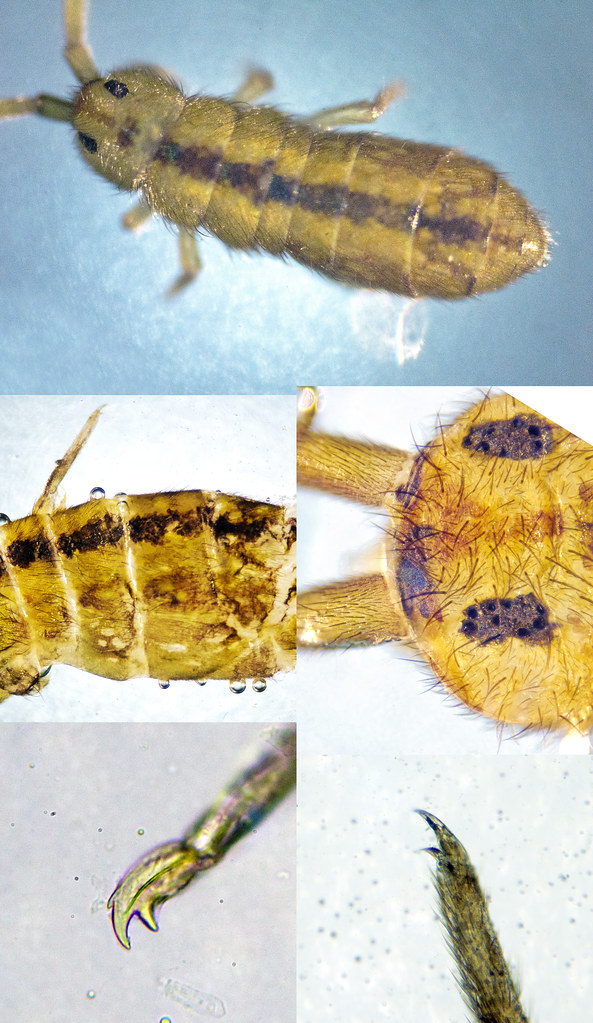
The natural assumption was to assume that these were all Isotoma viridis, but I checked half a dozen of them and they were all Isotoma caerulea (two pairs of manubrial teeth plus dorsal macrosetae on manubrium A<B). This confirms my recent experience that it is not possible to distinguish between Isotoma anglicana/caerulea/viridis by habitus (general appearance) and that microscopic confirmation is required:

In amongst all the caerulea were two isotomids with a dark median band. Identifying these was a bit tricky as they had lost their macrosetae, but they turned out to be Isotomurus pseudopalustris (two characteristic pale dots either side of midline on abd4):

No comments:
Post a Comment
Comments welcome, I will respond as soon as I can.
Note: only a member of this blog may post a comment.